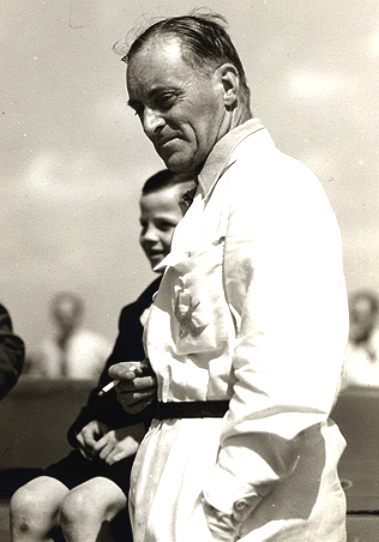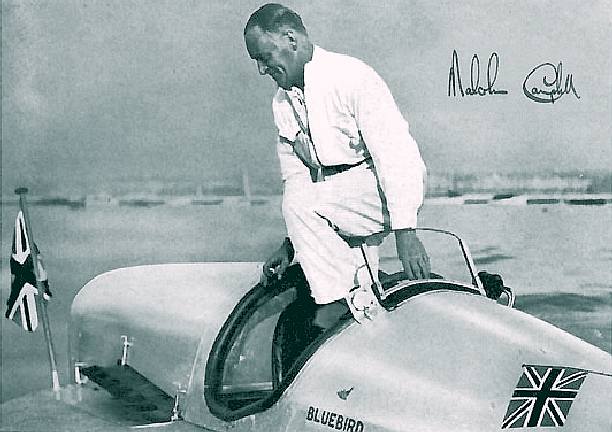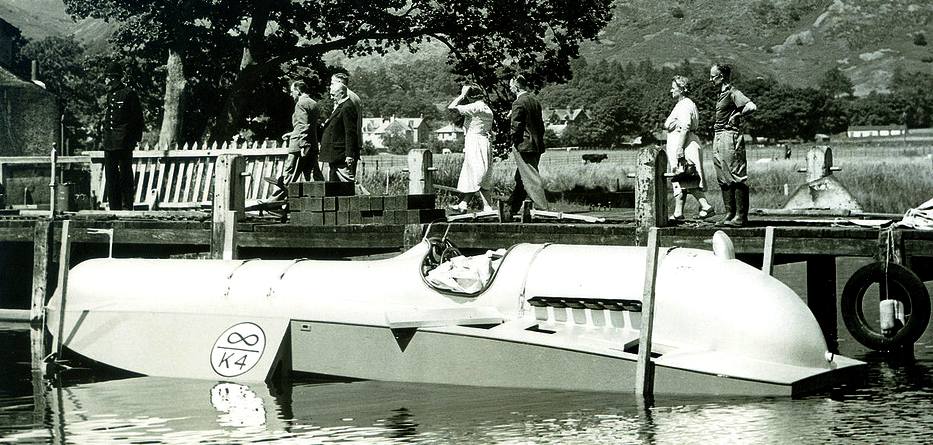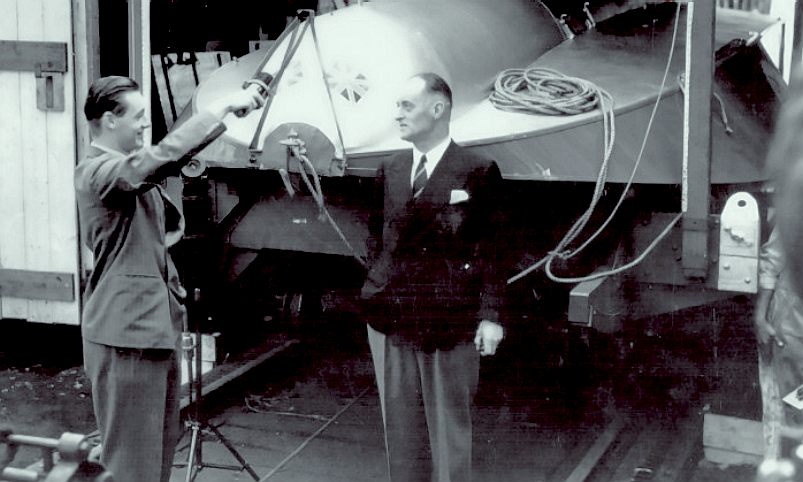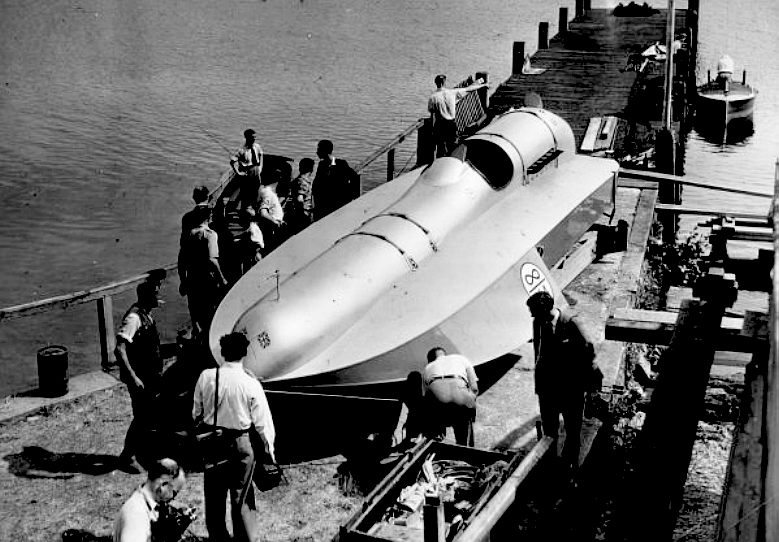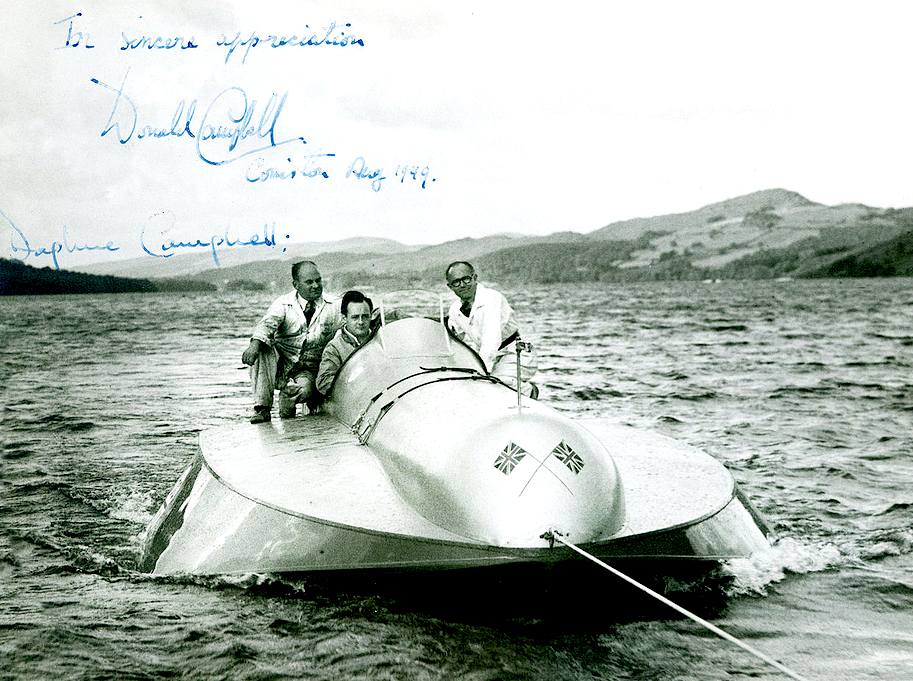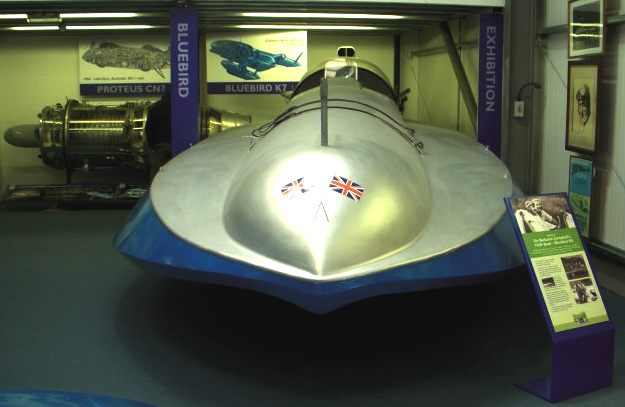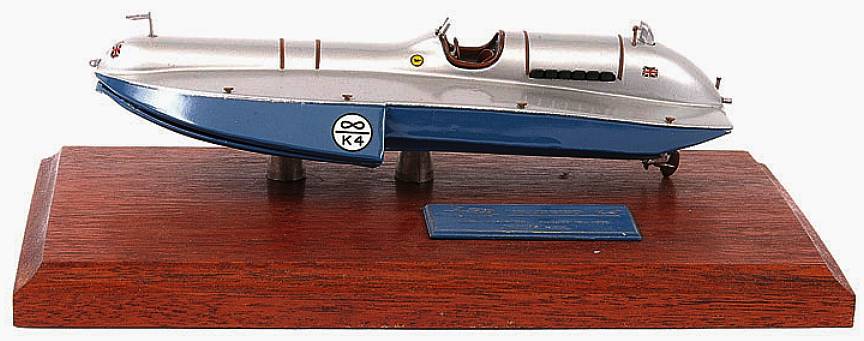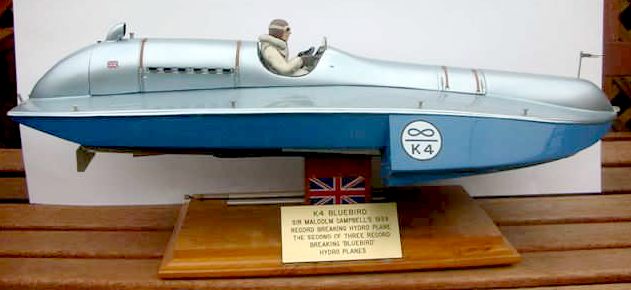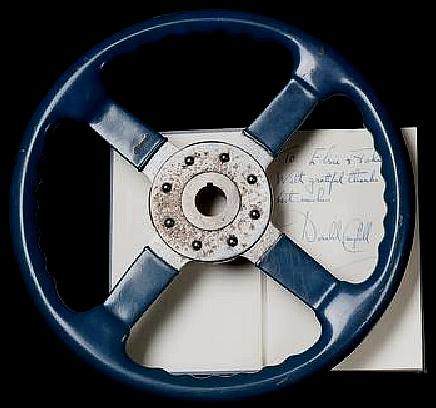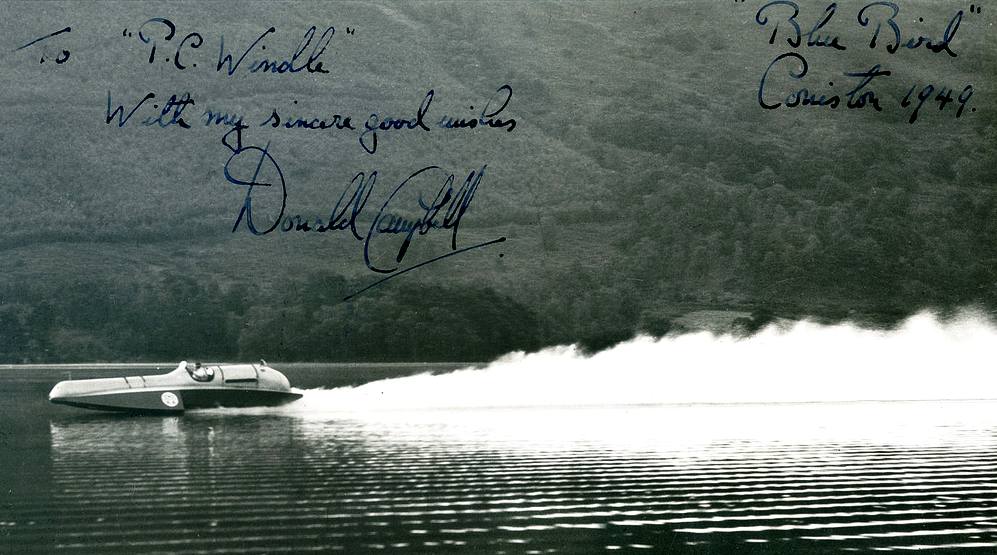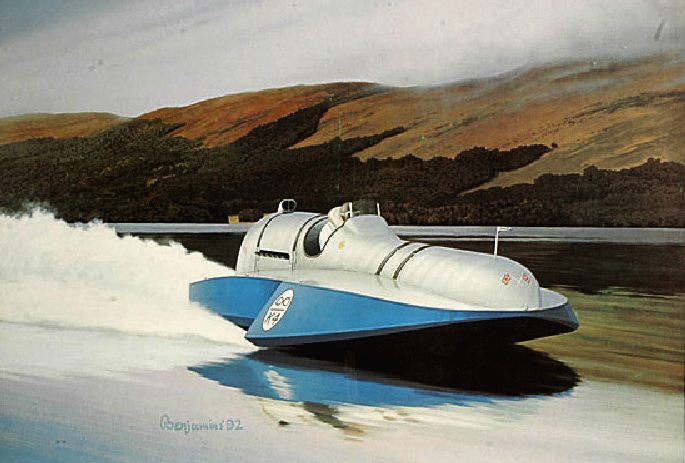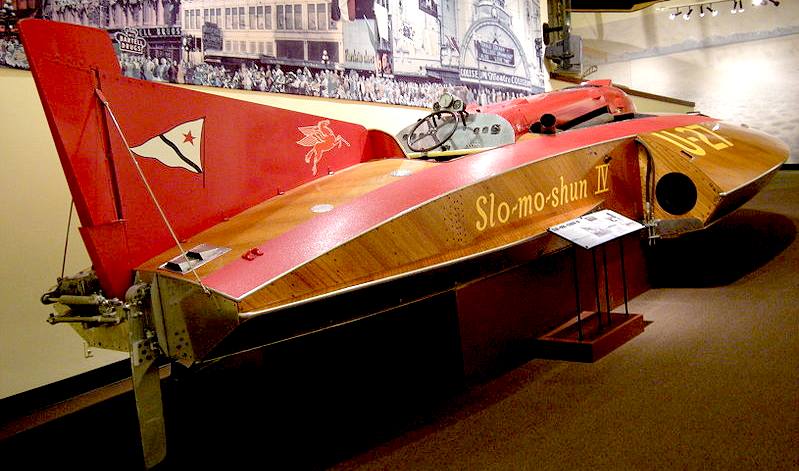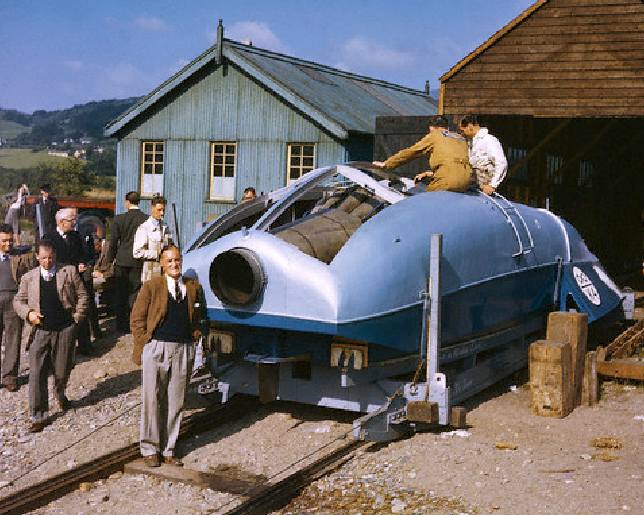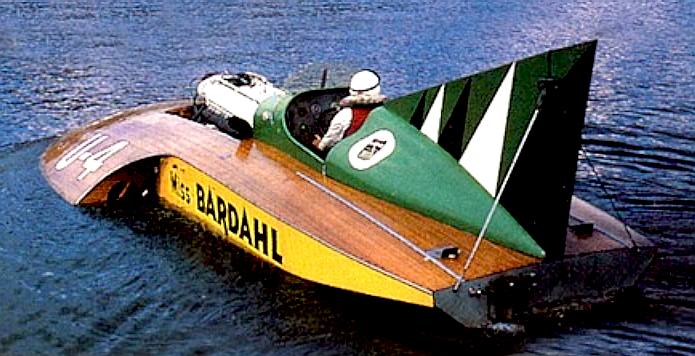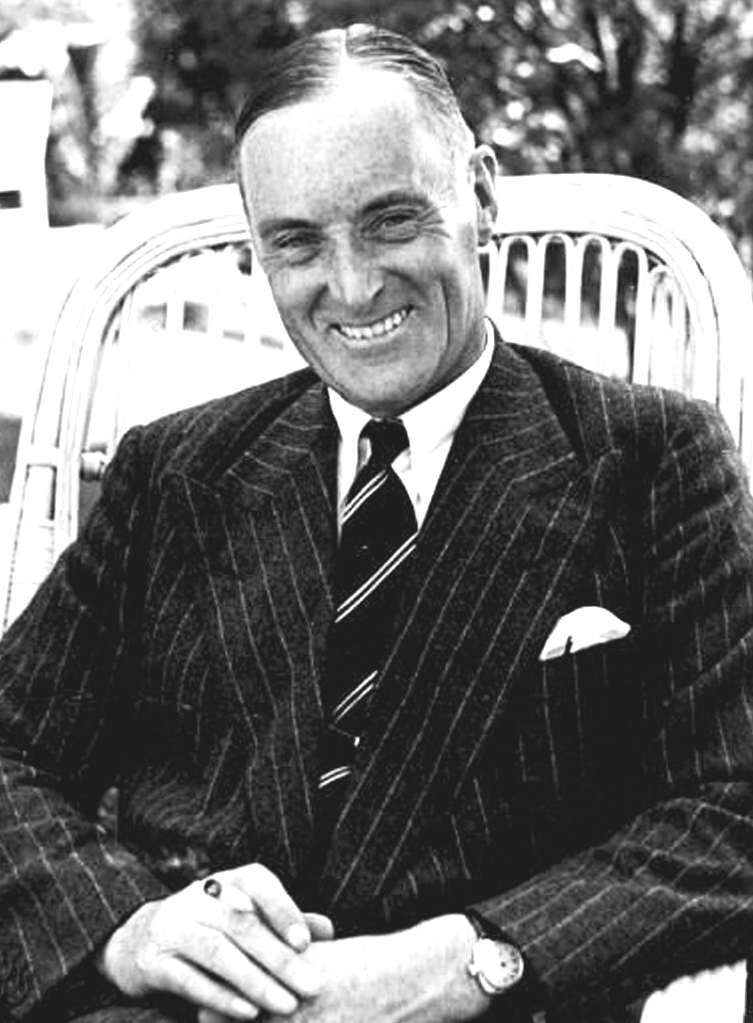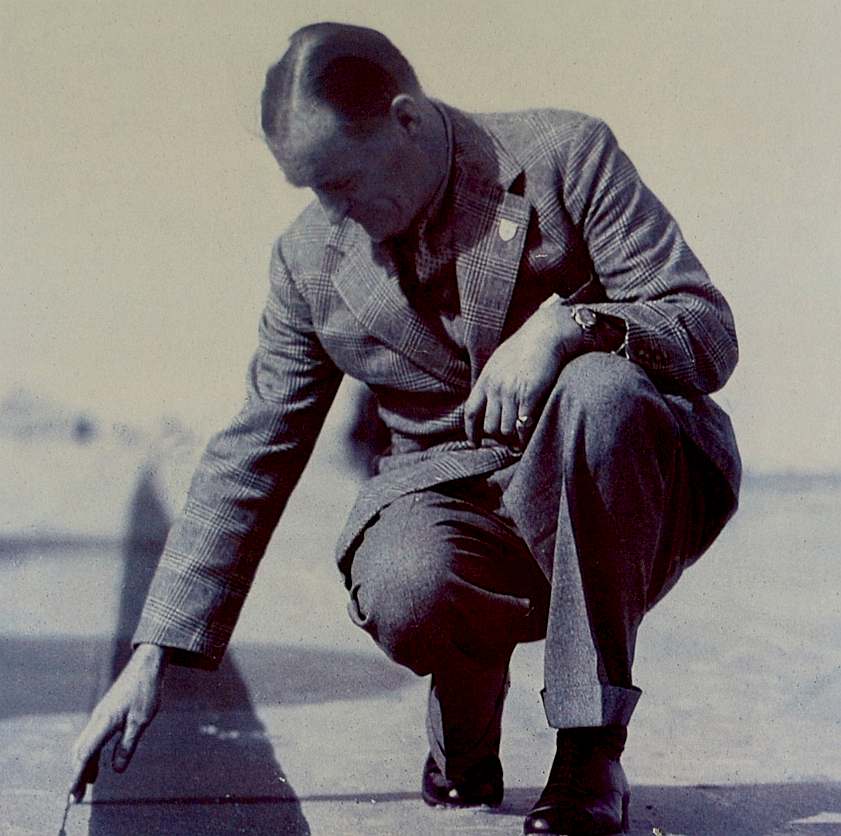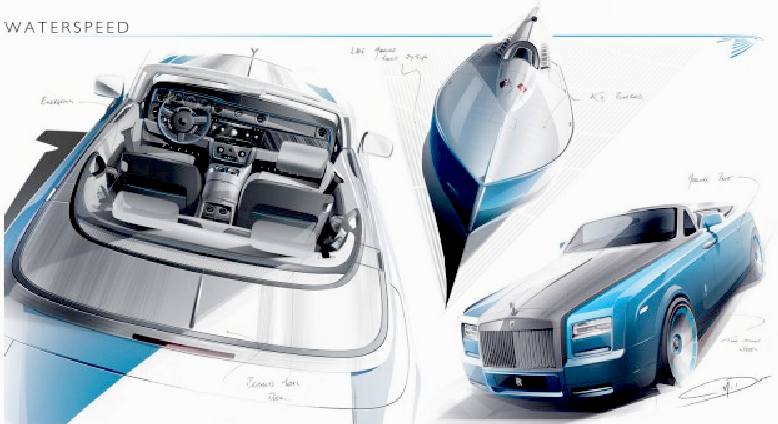|
BLUEBIRD K4 HYDROPLANE
|
|
|
Blue Bird K4 was a powerboat commissioned in 1939 by Sir Malcolm Campbell, to rival the Americans' efforts in the fight for the world
water speed record.
K4 was built by Vosper & Company as a replacement to the Blue Bird K3, which had set three other water speed records for Malcolm Campbell before the K4 was built. It also used the same Rolls-Royce R engine.
BOAT SHED: Donald and Sir Malcolm Campbell on the launch ramp - for a champagne christening of the K4 Blue Bird.
LAKESIDE RECOVERY: A rare picture of the K4 Blue Bird on a launch-recovery jetty
Returning to Coniston a week later for trials and an attempt on the record, its was found that the boat had now developed a tendency to porpoise at speeds over 100 mph with such violence that Sir Malcolm was nearly thrown from the cockpit. A record attempt was made on the following day and while Sir Malcolm gave it his best, he was unable to get the boat up to record speed because of the handling problems. He didn't gain any records, but the new superstructure gained the nickname 'The Coniston Slipper'. Sir Malcolm died the following year of a stroke..
SIR MALCOLM'S WATER SPEED RECORDS
1st September 1937: 126.33 mph Blue Bird K3, Sir Malcolm Campbell,Lake Maggiore, Switzerland
UNDER NEW MANAGEMENT: Bluebird K4 with Donald Campbell at the helm and his faithful mechanic crew.
DONALD
CAMPBELL
Donald
tried unsuccessfully to break his father's record with the K4. The boat
was deemed too slow, so after another superstructure rebuild and finally structural failure
it was replaced by the jet-powered K7, in which Donald
died during a record attempt in 1967.
The boat sank in 1951 at Coniston
Water
The next generation hydroplane: K3 to K4. Not much difference in the basic concept, but lead in angle to wider front sponsons will improve stability coupled with a change in weight distribution. Unfortunately, it did not work.
Left: Another fine K4 model from Astec. Right: Bonhams Lot 497 - Sold for £5,750 inc. premium - The steering wheel used in Donald Campbell's Bluebird K4 and K7 record breaking crafts, by Bluemels.
Donald Campbell's Bluebird K4 at speed on Lake Coniston - autographed photograph inscribed to PC Windle in 1949.
Limited Edition Print by D Benjamin titled "August Reflections" showing Sir Malcolm Campbell in Bluebird K4 on Conniston Water in 1939. This was a limited edition print No.10 of 100 and signed by the artist. Well framed - Mint. Friday 9th December 2005 12:00am - Lot 1492
SLO MO SHUN
Early in the morning of 26 June 1950 a small red boat skipped across Lake Washington, near Seattle, and improved on Campbell's record by 29 km/h (18 mph). The boat was called Slo-Mo-Shun IV. It was built by Seattle Chrysler dealer Stanley Sayres. The piston-engined boat was able to run at 160 mph (260 km/h) because its hull was designed to lift the top of the propellers out of water when running at high speed. This phenomenon, called ‘prop riding’, further reduced drag. In 1952 Sayres drove Slo-Mo-Shun to 287.25 km/h (178.49 mph) - a further 29 km/h (18 mph) increase.
The Slo-mo-shun water speed record boat - surface piercing prop rider
The renewed American success persuaded Malcolm Campbell's son Donald, who had already driven Bluebird K4 to within sight of his father's record, to make a further push for the record. However, the K4 was by now 12 years old, with a 20 year old engine and Campbell struggled to run at the speeds of the Seattle-built boat. In late 1951 K4 was written-off when it suffered a structural failure at 170 mph (270 km/h) on Coniston Water.
JOHN
COBB
Donald
Campbell's daughter, Gina,
was also to somersault her racing boat, but would cheat death. Since that
time, no member of the Campbell bloodline has dared to put his or her toe
in the water, or attempt the outright land speed record. The water speed
record is a dangerous business; one cannot blame them. These days thee
outright land speed record requires the skills of an aviator - and that
has probably set the bar too high.
A very rare picture of the 'Slipper', as the K4 jet boat came to be known. It was also a bit of a damp squib in water speed record terms. The White Hawk K5 never made a WSR run for real and the K6 of John Cobb came to grief at Loch Ness when her hull disintegrated.
Miss Bardahl in 1958, wooden decks nicely varnished. This hydroplane regularly tops 160mph, sending up a distinctive rooster tail about 40 feet in the air. Since 1939, Bardahl has been a leading supplier in the additives industry. From the early years of 1950s & 1960s, Bardahl additives have been widely used in various races in the USA and have won multiple accolades. Through R&D over the years, we have developed a series of fuel, oil, transmission and other products to help your vehicles run better. Bardahl fuel products are made to clean and maintain the performance of your engine’s fuel system, maintaining your engine’s efficiency and reduce common fuel system problems like loss of power, rough idle, and lower fuel mileage. Bardahl oil and transmission products are made to enhance your vehicles motor oil by protecting your engine from harmful deposits, reducing wear and extending the life and fuel economy of your vehicle’s engine.
MALCOLM CAMPBELL HERITAGE TRUST
The Malcolm Campbell Heritage Trust is (according to Donald Wales) a body set up by family members in the 2000s to seek to preserve what they may of Sir Malcolm. Exactly what they are seeking to put into trust is not known. We do not know if there is a private collection or museum that is operated by this trust, what they own and don't own. If you have any information of projects please let us know.
LINKS
http://www.bluebirdproject.com http://www.bluebirdproject.com/ https://www.facebook.com/BluebirdSupportersClub http://ginacampbellqso.com/record-attempts/great-britain/ https://www.bonhams.com/auctions/14259/lot/497/ http://www.bluebirdspeedrecords.com/timeline.php http://en.wikipedia.org/wiki/Water_speed_record http://www.touchwoodmodels.com/water-speed-record-models/mach-one-models.html http://www.historicracer.com/motorsport/the-unobtainable-campbell-book-preview/ http://www.sirmalcolmcampbell.com/sirwater.html http://en.wikipedia.org/wiki/Blue_Bird_K4 http://www.bardahl-ap.com/additives.php http://www.bonhams.com/auctions/14259/lot/496/ http://www.bonhams.com/auctions/18213/lot/238/ Arthur Benjamins - http://www.bluebirdpublications.co.uk/
Rolls Royce Phantom "Waterspeed" commemorative edition drophead coupe. This special limited run of custom cars is dedicated to Sir Malcolm Campbell and the famous K3, where the K4 and K7 would not be appropriate. The Rolls-Royce Phantom Drophead Coupé Waterspeed Collection was previewed to selected UK press and customers at an exclusive event on the site of the original Bluebird Motor Company – now the Bluebird Restaurant – on the King’s Road, London on Tuesday 13 May 2014.
SIR MALCOLM CAMPBELL'S BLUE BIRDS
DONALD CAMPBELL'S BLUEBIRDS
|
|
|
This
website is Copyright © 2014 Bluebird Marine Systems Limited.
The names Bluebird, Bluefish, Solar Navigator™, and the blue bird in flight
|
